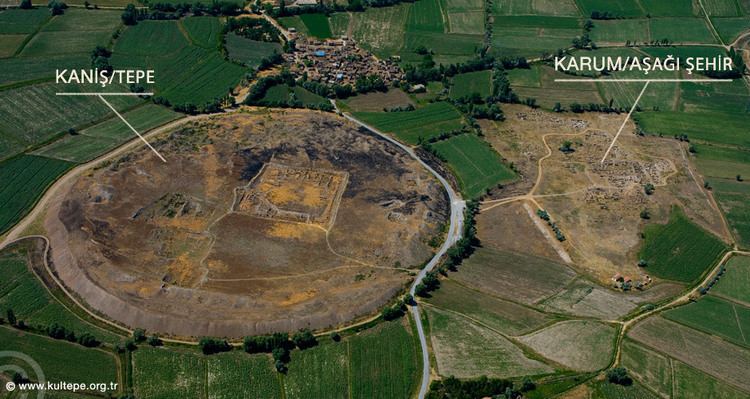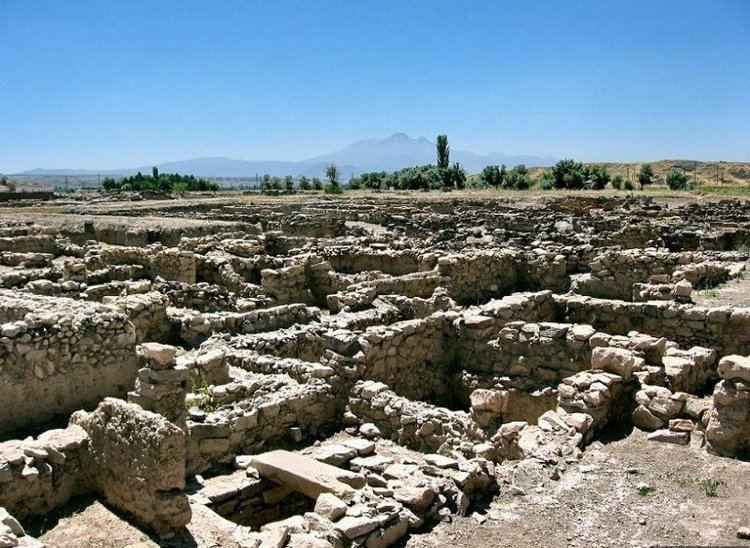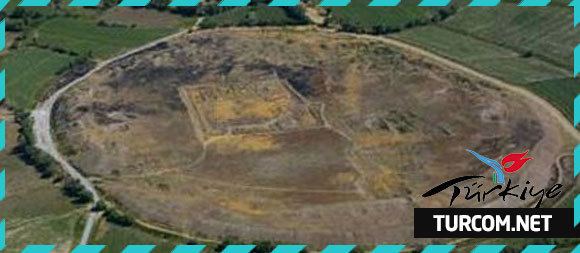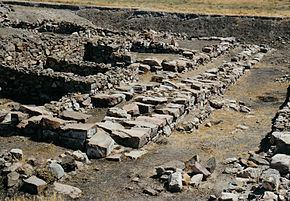Type Settlement Condition In ruins | ||
 | ||
Location | ||
Kültepe (Turkish: "Ash Hill") is an archaeological site located in Kayseri Province in Turkey. The nearest modern city to Kültepe is Kayseri, about 20 km southwest. It consists of a tell, the actual Kültepe, and a lower town where an Assyrian settlement was found. Its name in Assyrian texts from the 20th century BC was Kaneš; the later Hittites mostly called it Neša, occasionally Aniša.
Contents
- K ltepe de 4 bin y ll k dev k pler bulundu
- History
- Kanea
- Archaeology of Kltepe
- Krum Kane
- Dating of the Warama Sarayi
- References

K ltepe de 4 bin y ll k dev k pler bulundu
History

Kaneš, inhabited continuously from the Chalcolithic to Roman times, flourished as an important Hattic, Hittite and Hurrian city, containing a large kārum (merchant colony) of the Old Assyrian Empire from ca. 21st to 18th centuries BC. This kārum appears to have served as "the administrative and distribution centre of the entire Assyrian colony network in Anatolia." A late (c 1400 BC) witness to an old tradition includes a king of Kaneš called Zipani among seventeen local city-kings who rose up against Naram-Sin of Akkad (ruled c.2254-2218 BC). It is the site of discovery of the earliest traces of the Hittite language, and the earliest attestation of any Indo-European language, dated to the 20th century BC.
Kaneša
The king of Zalpuwa, Uhna, raided Kanes, after which the Zalpuwans carried off the city's Šiuš idol. Pithana, the king of Kussara, conquered Neša "in the night, by force", but "did not do evil to anyone in it." Neša revolted against the rule of Pithana's son, Anitta, but Anitta quashed the revolt and made Neša his capital. Anitta further invaded Zalpuwa, captured its king Huzziya, and recovered the Šiuš idol for Neša.

In the 17th century BC, Anitta's descendants moved their capital to Hattusa, which Anitta had cursed, thus founding the line of Hittite kings. The inhabitants thus referred to the Hittite language as Nešili, "the language of Neša".
Archaeology of Kültepe

In 1925, Bedřich Hrozný excavated Kültepe and found over 1000 cuneiform tablets, some of which ended up in Prague and some in Istanbul. Modern archaeological work began in 1948 when Kültepe was excavated by a team from the Turkish Historical Society and the General Directorate of Antiquities and Museums. The team was led by Tahsin Özgüç until his death in 2005.
Some attribute Level II's burning to the conquest of the city of Assur by the kings of Eshnunna; but Bryce blames it on the raid of Uhna. Some attribute Level Ib's burning to the fall of Assur, to other nearby kings, and, eventually, to Hammurabi of Babylon. To date, over 20,000 cuneiform tablets have been recovered from the site.
Kârum Kaneš
The quarter of the city that most interests historians is the kārum. During the Chalcolithic, the kārum was a portion of the city that was set aside by local officials for the early Assyrian merchants to use without paying taxes, as long as the goods remained inside the kārum. The term kārum means "port" in Akkadian, the lingua franca of the time, although it was extended to refer to any trading colony whether or not it bordered water.
Several other cities in Anatolia also had kārum, but the largest was Kaneš. This important kārum was inhabited by soldiers and merchants from Assyria for hundreds of years, who traded local tin and wool for luxury items, foodstuffs and spices, and, woven fabrics from the Assyrian homeland and from Elam.
The remains of the kārum form a large circular mound 500 m in diameter and about 20 m above the plain (a tell). The kârum settlement is the result of several superimposed stratigraphic periods. New buildings were constructed on top of the remains of the earlier periods; thus, there is a deep stratigraphy from prehistoric times to the early Hittite period.
The kârum was destroyed by fire at the end of both levels II and Ib. The inhabitants left most of their possessions behind to be found by modern archaeologists.
The findings have included numerous baked-clay tablets, some of which were enclosed in clay envelopes stamped with cylinder seals. The documents record common activities such as trade between the Assyrian colony and the city state of Assur and between Assyrian merchants and local people. The trade was run by families rather than by the state. These Kültepe texts are the oldest documents from Anatolia. Although they are written in Old Assyrian, the Hittite loanwords and names in these texts constitute the oldest record of any Indo-European language (see also Ishara). Most of the archaeological evidence is typical of Anatolia rather than of Assyria, but the use of both cuneiform and the dialect is the best indication of Assyrian presence.
Dating of the Waršama Sarayi
At Level II, the destruction was so total that no wood survived for dendrochronological studies. In 2003, researchers from Cornell University dated wood in level Ib from the rest of the city (which was built centuries earlier). The dendrochronologists date the bulk of the wood from buildings of the Waršama Sarayi to 1832 BC, with further refurbishments up to 1779 BC.
